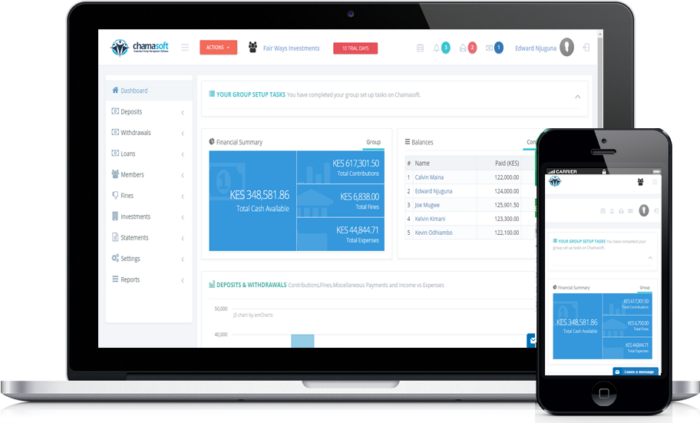Effective time management in chama meetings is essential for any chama that is keen to achieve success in the long run. This is quite crucial, especially during the chama meetings.
Chama meetings are generally crucial to streamline various chama operations and keep members up to date on any changes that could be important to the chama for its adaptability and development.
Chamas that are able to optimize time during their gatherings ensure that the discussions are productive. Also, the decisions are made efficiently and goals are achieved within set timelines. In chamas, there are multiple members and various agenda items to discuss. Therefore, it is quite crucial to make use of the limited time available.
Here are tips to optimize time during chama meetings.
Set Clear Meeting Objectives and Agendas
Time wastage in chama meetings is often a result of a lack of a plan and setting clear objectives. In the case where there is a lack of clarity in a chama meeting, the meetings often veer off track, leading to the wasting of valuable time. Before each meeting, the chama leaders should ensure that they define the purpose of the gathering and establish a comprehensive agenda. This means that the chama identifies the primary purpose of the meeting and the specific goals you aim to achieve.

If the meeting goals are well identified, all members are on the same page when attending the meetings. Also, by sharing the agenda in advance with the members, they all come prepared with relevant information and ideas.
Therefore, if the desired outcome of chama meetings is well defined, the members will efficiently manage to maintain focus and ensure that their discussions remain relevant. This means that members are aware of the meeting objectives and agendas. The chama members can also stay focused and avoid unnecessary tangents, ultimately saving valuable time.
To optimize time, it is also appropriate to allocate specific time slots for each agenda item. By doing this, the chama members not only keep the meeting on track but also encourages members to prioritize discussions and make concise points.
The overall meeting duration should also be set. This will help ensure that the agenda items are well prioritized depending on the priority and also importance.
By allocating the specific time slots, it is possible to place the time-sensitive or critical items at the beginning thus ensuring that they receive sufficient attention from the chama members.
Therefore, by chama leaders ensuring that they allocate time slots for the topics, they are able to only cover the essential topics at that moment and set aside other issues for a future meeting or even plan to address them outside the scheduled meeting to maintain productivity.
Evaluate and Continuously Improve
As chamas aim to optimize time during chama meetings, it is crucial for the chama leaders to lead the members in undertaking an evaluation after the chama meetings. This is crucial for the chamas to know each gathering’s effectiveness and make necessary improvements.
After every meeting, the chama members can review the agenda, the time spent on each item, and the overall outcome. Also, chamas can ensure that they assess whether they met the objectives and, if not, identify the factors contributing to inefficiencies.
Chamas can then use this feedback to adjust future meeting agendas, communication strategies, or task delegation.
Regular monitoring and evaluation should be done on meeting performance. This makes it possible to identify patterns, address challenges, and implement measures for continuous improvement.
Utilize Technology Tools
By chamas having a chama management system it is possible for them to significantly enhance time management during chama meetings.

Generally, technology tools significantly, enhance time management through chama meetings. This is especially a result of the ease of communication and coordination of the members.
By leveraging technology tools, it is possible to make use of collaboration platforms, project management tools, and virtual meeting software that offer features like shared agendas, document sharing, and real-time collaboration. These tools streamline communication, facilitate efficient information exchange, and help Chama members stay organized.
After meetings, it is also possible to ask members after the meeting to share feedback. They can also contribute suggestions for implementation in future meetings.
Additionally, utilizing time-tracking applications to monitor the duration spent on each agenda item helps to identify areas for improvement. Therefore, integrating technology into Chama meetings can save time, increase productivity, and promote seamless collaboration.
Encourage Active Participation and Engagement
Active participation from all Chama members is vital to optimizing time during meetings. Encourage every member to engage in discussions and share their insights. The Chama leadership should create a supportive environment where individuals feel comfortable expressing their opinions. However, it is equally important to manage the participation effectively, ensuring that discussions do not veer off-topic or become dominated by a few members. Chamas can achieve moderation by politely redirecting the conversation back to the agenda when needed. Chamas can achieve moderation by politely redirecting the conversation back to the agenda when needed. Active participation keeps the discussions focused and prevents unnecessary time wastage.

Implement Decision-Making Techniques
In most instances, chama leaders and members are not able to efficiently agree and come up with decisions. Therefore, decision-making can sometimes consume a significant portion of chama meetings.
Implementing structured decision-making techniques can help solve this problem. These can help the chamas optimize time in such situations.
In a situation where the members make use of the ‘Consensus’ approach, it is possible for all members to express their views and it is also possible to reach a solution through mutual agreement.
Also, the chamas can utilize the voting technique. By doing this members can cast their votes to decide on their course of action. This will help minimize time spent in some of the decision-making scenarios.
By adopting effective decision-making techniques, chamas expedite the decision-making process, prevents prolonged discussions, and ensure consideration of everyone’s input.
In conclusion, efficient time management is crucial for Chama meetings to achieve their intended goals. By setting clear meeting objectives and agendas, evaluating and continuously improving, utilizing technology tools, encouraging active participation and engagement, and implementing decision-making techniques, chama members can optimize their time during meetings. These strategies are also quite effective to ensure that chama members stay focused, make informed decisions, and create a culture of efficiency and productivity. Effective time management also makes the chama meetings more purposeful thus enabling members to achieve their collective goals successfully. Therefore, effective time management not only maximizes efficiency but also strengthens the overall functioning of the chama.
Categorised in: General
This post was written by Cynthia Njoki
Please Subscribe and get Notified when new articles are posted
